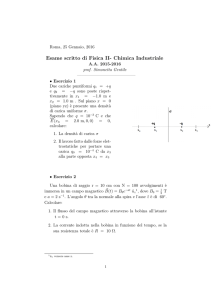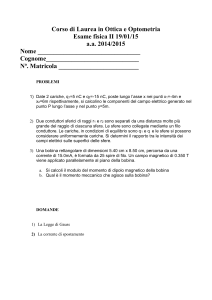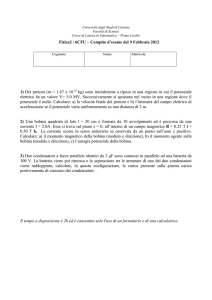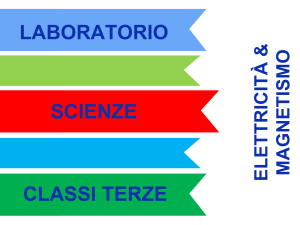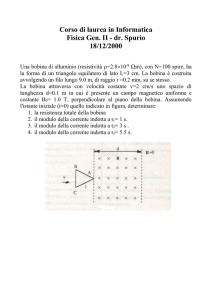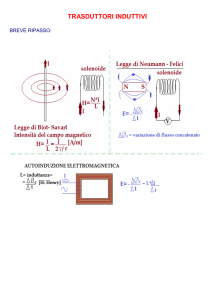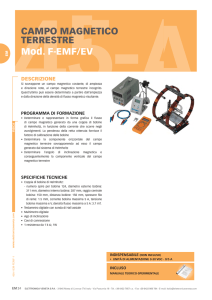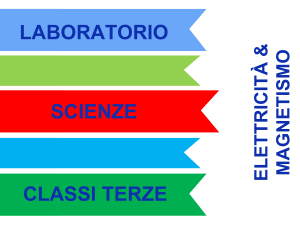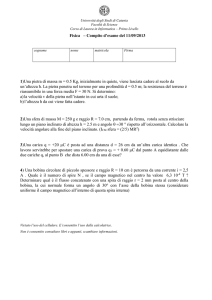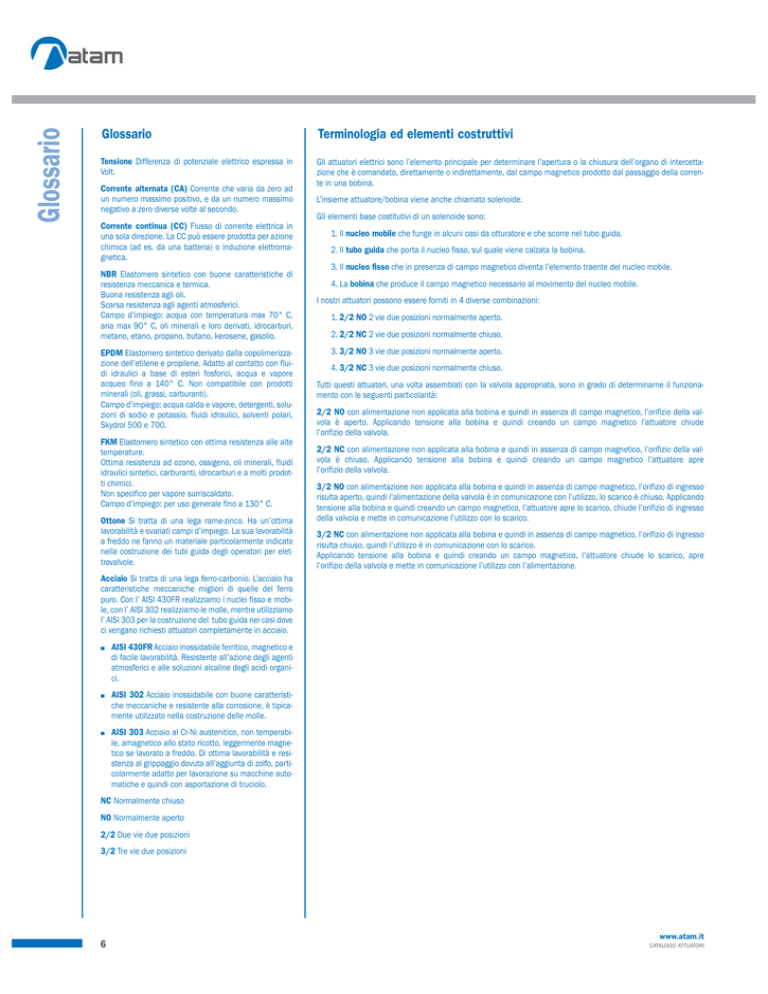
Glossario
Glossario
Terminologia ed elementi costruttivi
Tensione Differenza di potenziale elettrico espressa in
Volt.
Gli attuatori elettrici sono l’elemento principale per determinare l’apertura o la chiusura dell’organo di intercettazione che è comandato, direttamente o indirettamente, dal campo magnetico prodotto dal passaggio della corrente in una bobina.
Corrente alternata (CA) Corrente che varia da zero ad
un numero massimo positivo, e da un numero massimo
negativo a zero diverse volte al secondo.
Corrente continua (CC) Flusso di corrente elettrica in
una sola direzione. La CC può essere prodotta per azione
chimica (ad es. da una batteria) o induzione elettromagnetica.
NBR Elastomero sintetico con buone caratteristiche di
resistenza meccanica e termica.
Buona resistenza agli oli.
Scarsa resistenza agli agenti atmosferici.
Campo d’impiego: acqua con temperatura max 70° C,
aria max 90° C, oli minerali e loro derivati, idrocarburi,
metano, etano, propano, butano, kerosene, gasolio.
EPDM Elastomero sintetico derivato dalla copolimerizzazione dell’etilene e propilene. Adatto al contatto con fluidi idraulici a base di esteri fosforici, acqua e vapore
acqueo fino a 140° C. Non compatibile con prodotti
minerali (oli, grassi, carburanti).
Campo d’impiego: acqua calda e vapore, detergenti, soluzioni di sodio e potassio, fluidi idraulici, solventi polari,
Skydrol 500 e 700.
FKM Elastomero sintetico con ottima resistenza alle alte
temperature.
Ottima resistenza ad ozono, ossigeno, oli minerali, fluidi
idraulici sintetici, carburanti, idrocarburi e a molti prodotti chimici.
Non specifico per vapore surriscaldato.
Campo d’impiego: per uso generale fino a 130° C.
Ottone Si tratta di una lega rame-zinco. Ha un’ottima
lavorabilità e svariati campi d’impiego. La sua lavorabilità
a freddo ne fanno un materiale particolarmente indicato
nella costruzione dei tubi guida degli operatori per elettrovalvole.
L’insieme attuatore/bobina viene anche chiamato solenoide.
Gli elementi base costitutivi di un solenoide sono:
1. Il nucleo mobile che funge in alcuni casi da otturatore e che scorre nel tubo guida.
2. Il tubo guida che porta il nucleo fisso, sul quale viene calzata la bobina.
3. Il nucleo fisso che in presenza di campo magnetico diventa l’elemento traente del nucleo mobile.
4. La bobina che produce il campo magnetico necessario al movimento del nucleo mobile.
I nostri attuatori possono essere forniti in 4 diverse combinazioni:
1. 2/2 NO 2 vie due posizioni normalmente aperto.
2. 2/2 NC 2 vie due posizioni normalmente chiuso.
3. 3/2 NO 3 vie due posizioni normalmente aperto.
4. 3/2 NC 3 vie due posizioni normalmente chiuso.
Tutti questi attuatori, una volta assemblati con la valvola appropriata, sono in grado di determinarne il funzionamento con le seguenti particolarità:
2/2 NO con alimentazione non applicata alla bobina e quindi in assenza di campo magnetico, l’orifizio della valvola è aperto. Applicando tensione alla bobina e quindi creando un campo magnetico l’attuatore chiude
l’orifizio della valvola.
2/2 NC con alimentazione non applicata alla bobina e quindi in assenza di campo magnetico, l’orifizio della valvola è chiuso. Applicando tensione alla bobina e quindi creando un campo magnetico l’attuatore apre
l’orifizio della valvola.
3/2 NO con alimentazione non applicata alla bobina e quindi in assenza di campo magnetico, l’orifizio di ingresso
risulta aperto, quindi l’alimentazione della valvola è in comunicazione con l’utilizzo, lo scarico è chiuso. Applicando
tensione alla bobina e quindi creando un campo magnetico, l’attuatore apre lo scarico, chiude l’orifizio di ingresso
della valvola e mette in comunicazione l’utilizzo con lo scarico.
3/2 NC con alimentazione non applicata alla bobina e quindi in assenza di campo magnetico, l’orifizio di ingresso
risulta chiuso, quindi l’utilizzo è in comunicazione con lo scarico.
Applicando tensione alla bobina e quindi creando un campo magnetico, l’attuatore chiude lo scarico, apre
l’orifizio della valvola e mette in comunicazione l’utilizzo con l’alimentazione.
Acciaio Si tratta di una lega ferro-carbonio. L’acciaio ha
caratteristiche meccaniche migliori di quelle del ferro
puro. Con l’ AISI 430FR realizziamo i nuclei fisso e mobile, con l’ AISI 302 realizziamo le molle, mentre utilizziamo
l’ AISI 303 per la costruzione del tubo guida nei casi dove
ci vengano richiesti attuatori completamente in acciaio.
■
■
■
AISI 430FR Acciaio inossidabile ferritico, magnetico e
di facile lavorabilità. Resistente all’azione degli agenti
atmosferici e alle soluzioni alcaline degli acidi organici.
AISI 302 Acciaio inossidabile con buone caratteristiche meccaniche e resistente alla corrosione, è tipicamente utilizzato nella costruzione delle molle.
AISI 303 Acciaio al Cr-Ni austenitico, non temperabile, amagnetico allo stato ricotto, leggermente magnetico se lavorato a freddo. Di ottima lavorabilità e resistenza al grippaggio dovuta all’aggiunta di zolfo, particolarmente adatto per lavorazione su macchine automatiche e quindi con asportazione di truciolo.
NC Normalmente chiuso
NO Normalmente aperto
2/2 Due vie due posizioni
3/2 Tre vie due posizioni
6
www.atam.it
CATALOGO ATTUATORI
Terminology and constructive elements
Voltage Difference of electric potential measured in
Volts.
The electrical operators are the main element which determine the opening or closing of the interception coupler,
which is actuated, directly or indirectly, by the magnetic field produced by the current flow in a coil.
Alternate current (AC) Current that repeatedly changes
from zero to a positive maximum number and then from
a negative maximum number to zero several times in one
second.
The operator and coil assembly can also be called solenoid.
Direct current (DC) Flow of electric current in one direction. A DC can be produced by a chemical action (for
example by a battery) or by electromagnetic induction.
NBR Synthetic elastomer with good mechanical and
thermal resistant properties.
Good resistance to oils.
Poor resistance to atmospheric agents.
Field of employment: water with temperature max 70°C,
air with max 90°C, mineral oils and derivatives, hydrocarbons, methane, ethane, propane, butane, kerosene,
diesel oil.
EPDM Synthetic elastomer obtained from the copolymerization of ethylene and propylene. Suitable in applications with hydraulic fluids made up of phosphoric ester,
water and steam up to 140°C. Not compatible with mineral products (oils, greases, fuels). Field of employment:
warm water and steam, detergents, solutions of sodium
and potassium, hydraulic fluids, polar solvents, Skydrol
500 and 700.
FKM Synthetic elastomer with very good resistance to
high temperatures. Also good resistance to ozone, oxygen, mineral oils, synthetic hydraulic fluids, fuels, hydrocarbons and to many chemical products.
Not specific for overheated steam.
Field of employment: for general use up to 130°C.
Brass An alloy of copper and zinc. It has an optimal workability with many different fields of employment. Thanks
to its cold workability it is considered a material particularly suitable in the construction of operator guide tubes.
The main elements of a solenoid are:
1. The plunger which acts in some cases as a shutter and moves within the guide tube.
2. The guide tube that supports the fixed core on which the coil is assembled.
3. The fixed core which in the presence of a magnetic field allows the plunger to move.
4. The coil which produces the magnetic field required to move the plunger.
Our operators can be supplied in four different combinations:
1. 2/2 NO 2 way two position normally open
2. 2/2 NC 2 way two position normally closed
3. 3/2 NO 3 way two position normally open
4. 3/2 NC 3 way two position normally closed
All of these operators when assembled with the appropriate valve are capable to provide valve operations with the
following characteristics:
2/2 NO with no power supplied to the coil there is no magnetic field, so the main orifice of the valve is open.
Applying voltage to the coil produces a magnetic field allowing the operator to close the valve’s main orifice.
2/2 NC with no power supplied to the coil there is no magnetic field, so the main orifice of the valve is
closed. Applying voltage to the coil produces a magnetic field allowing the operator to open the valve’s main orifice.
3/2 NO with no power supplied to the coil there is no magnetic field, so the main orifice of the valve is open allowing the valve’s inlet to communicate with the outlet. The exhaust is closed.
Applying voltage to the coil produces a magnetic field allowing the operator to close the valve’s main orifice allowing the valves outlet to communicate with the exhaust.
3/2 NC with no power supplied to the coil there is no magnetic field, so the main orifice of the valve is closed
allowing the valves outlet to communicate with the exhaust. The inlet is closed.
Applying voltage to the coil produces a magnetic field allowing the operator to open the valve’s main orifice allowing the valve’s inlet to communicate with the outlet. The exhaust is closed.
Steel An alloy of iron and carbon. Steel has mechanical
characteristics better than those of pure iron. With AISI
430FR we produce the fixed cores and the plungers, with
AISI 302 we produce the springs, and we can use AISI
303 for the production of the guide tube if we receive
requests for all steel operators.
■
■
■
AISI 430FR Ferritic stainless steel, magnetic and of
easy workability. Resistant to the atmospheric agents
and to the organic acid alkaline solutions.
AISI 302 Stainless steel with good mechanical characteristics and resistant to corrosion. It is typically
used for the production of springs.
AISI 303 Cr-Ni austenitic steel, not hardenable, not
magnetic when annealed, low magnetic when cold
worked. Excellent workability, resistant to seizures
thanks to the addition of sulphur, particularly good to
work with on automatic machineries and so with chip
removal.
NC Normally closed
NO Normally open
2/2 2 way 2 position
3/2 3 way 2 position
www.atam.it
OPERATORS CATALOGUE
7
Glossary
Glossary

